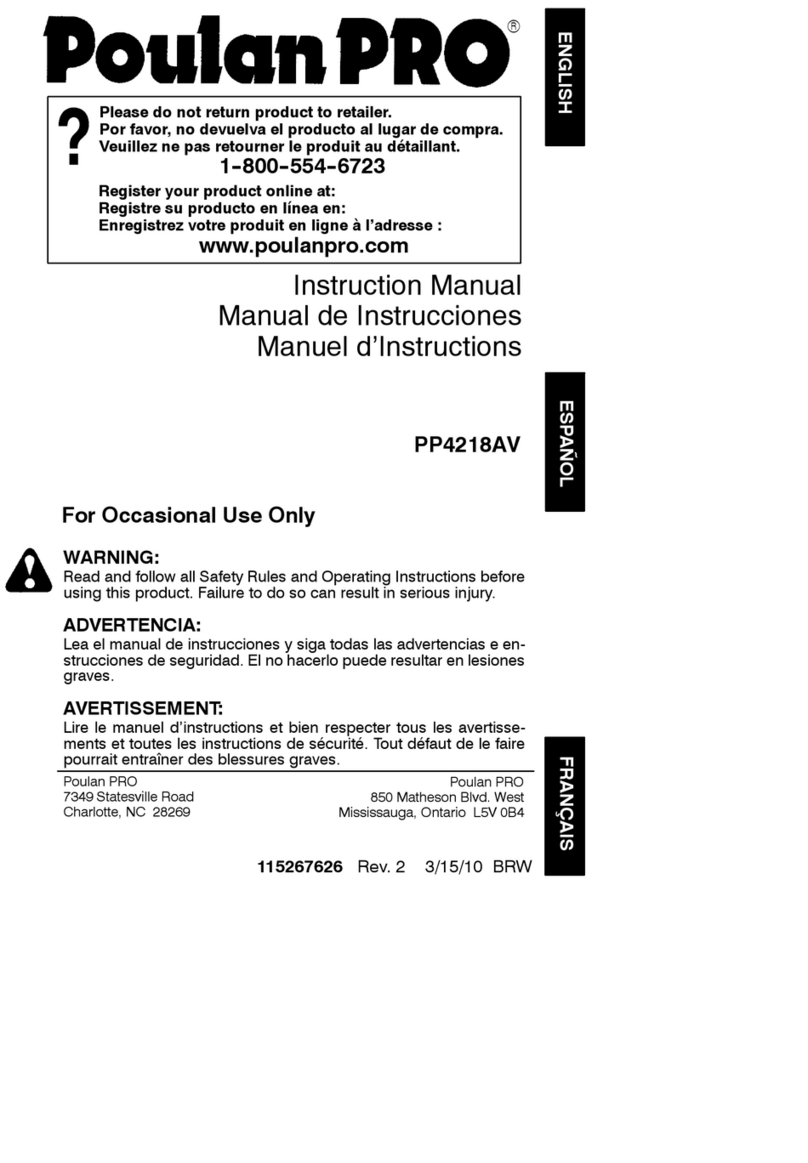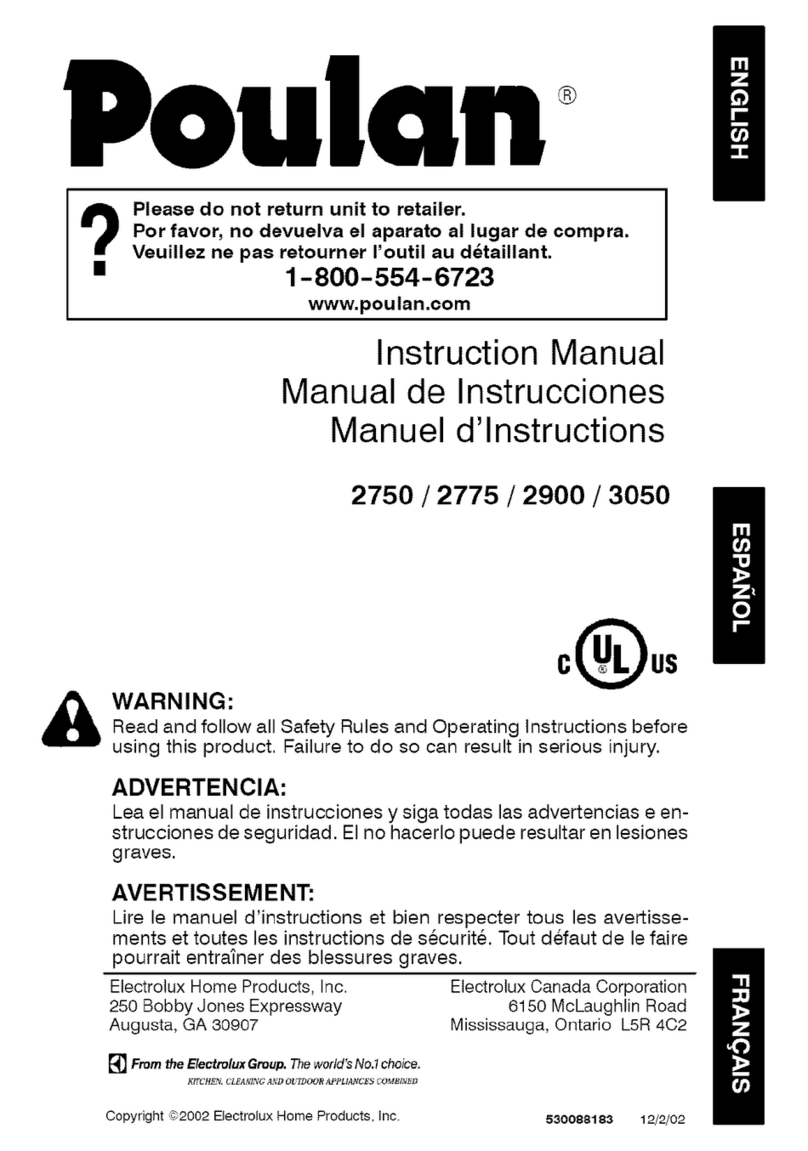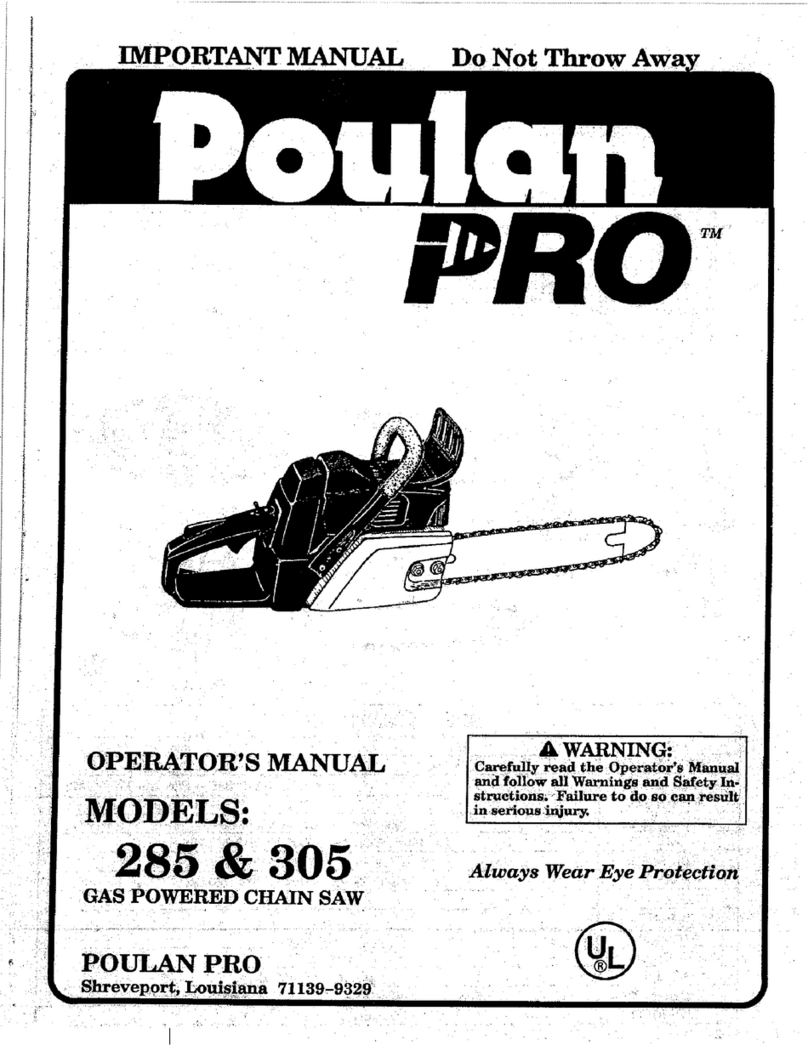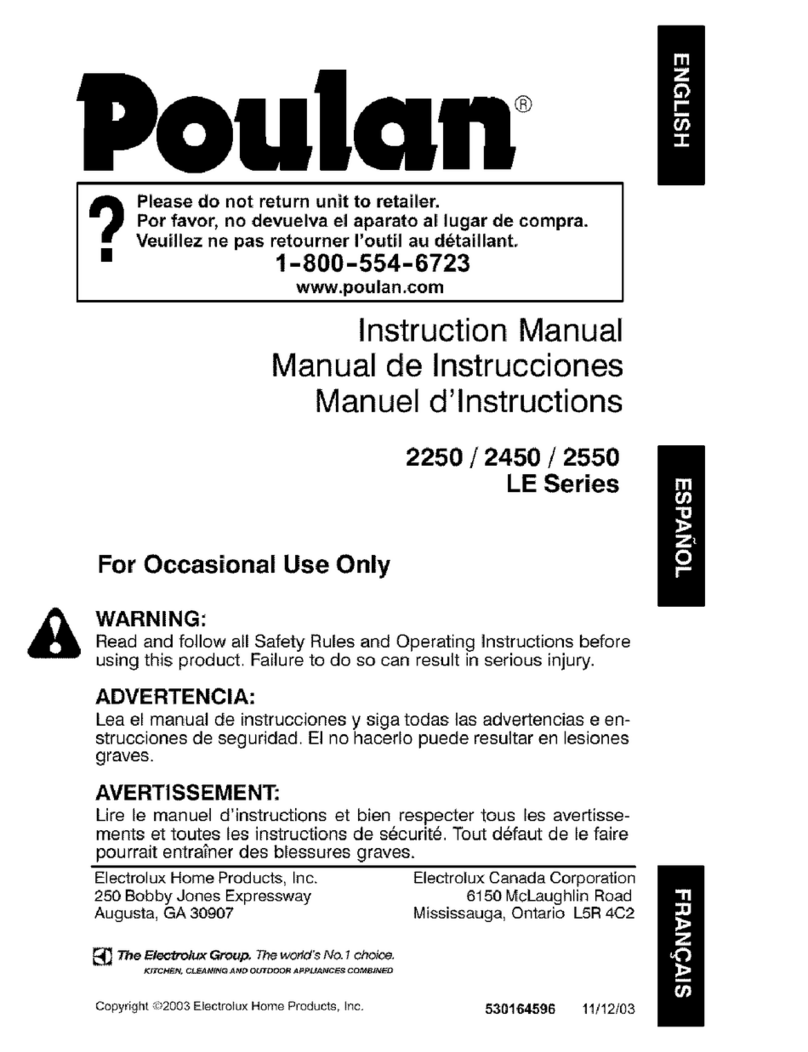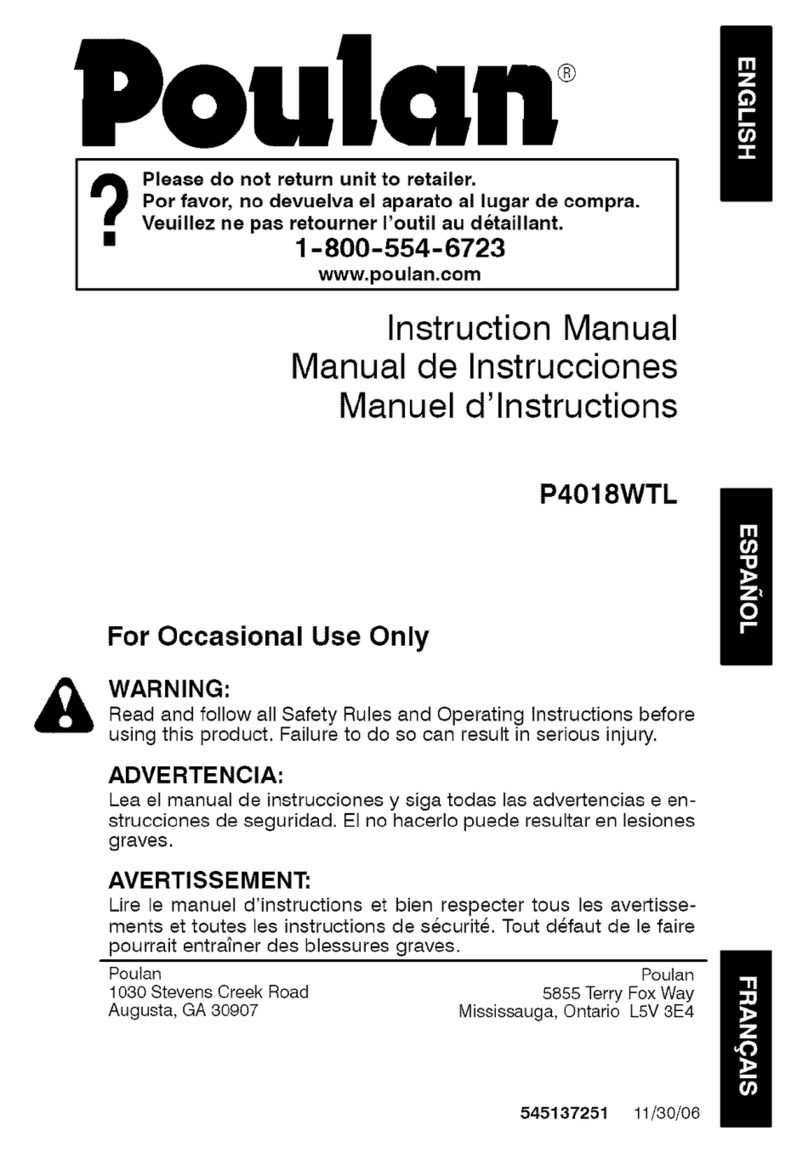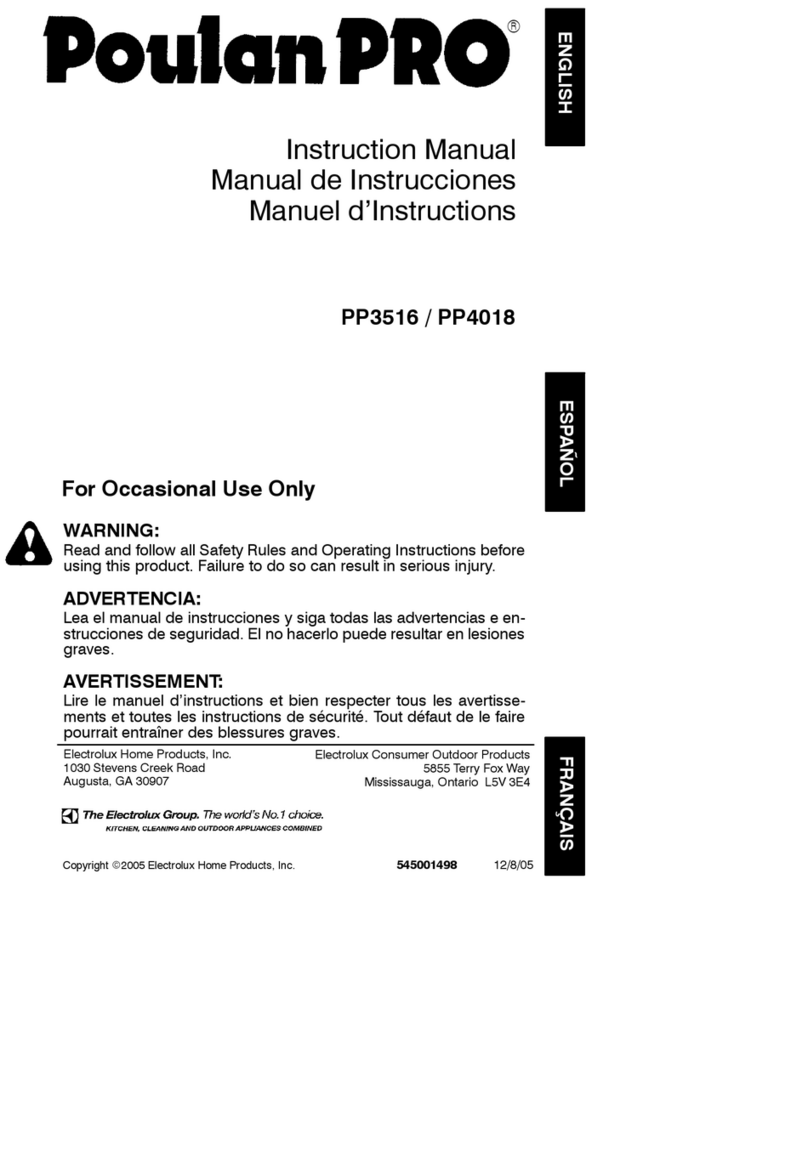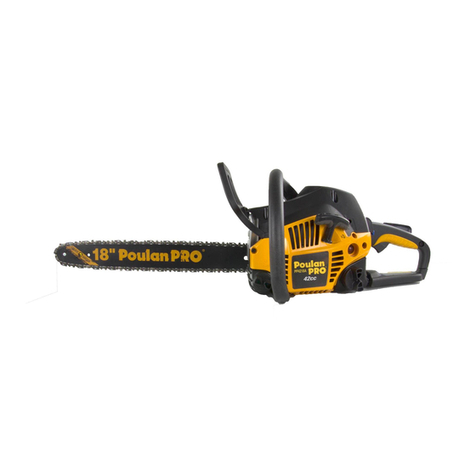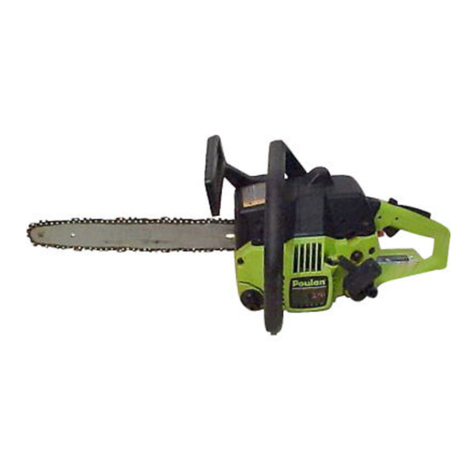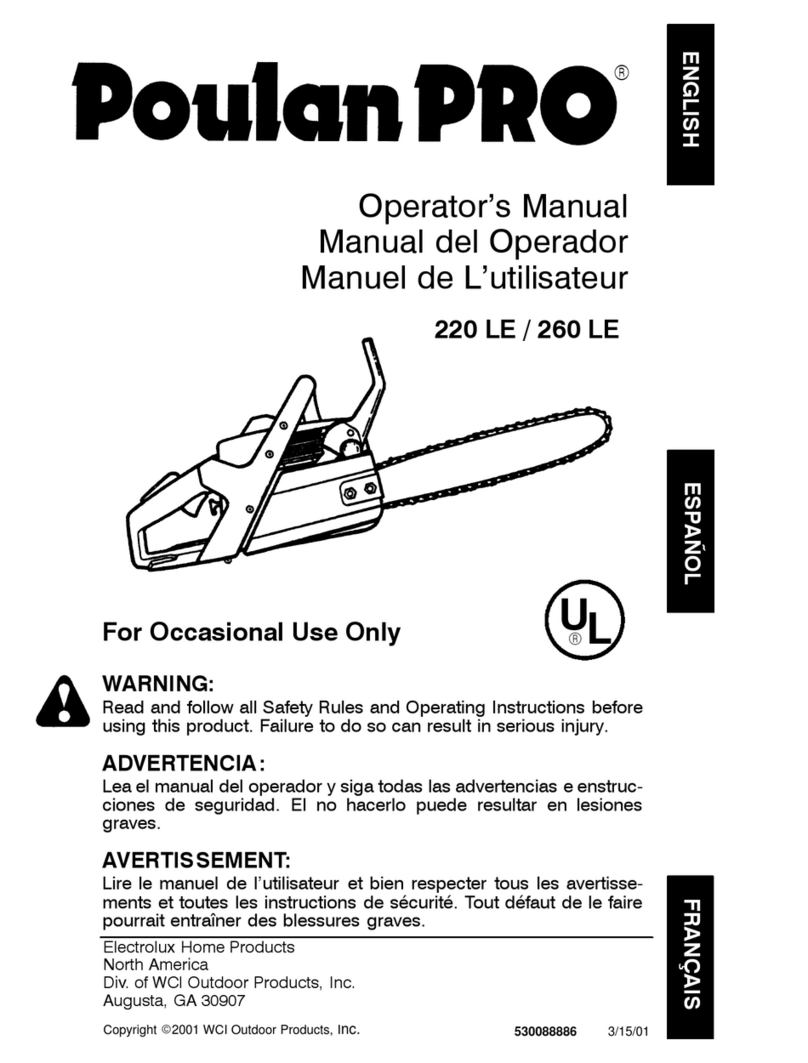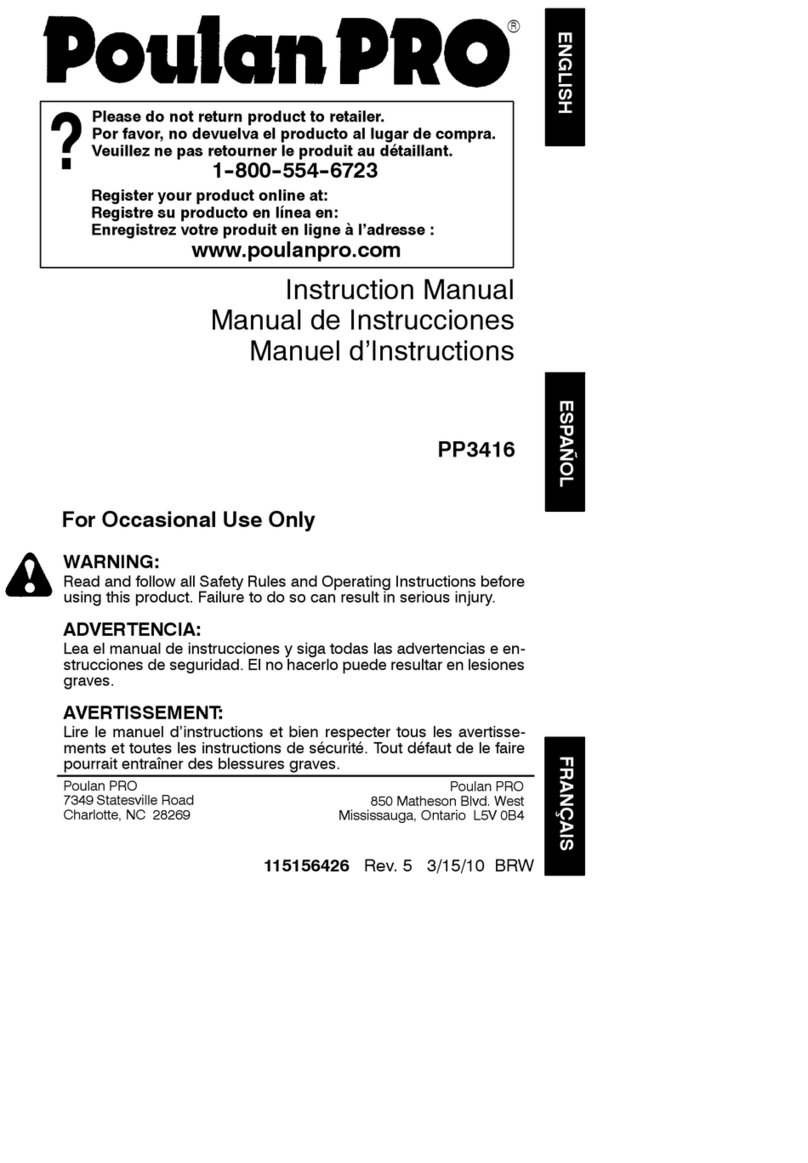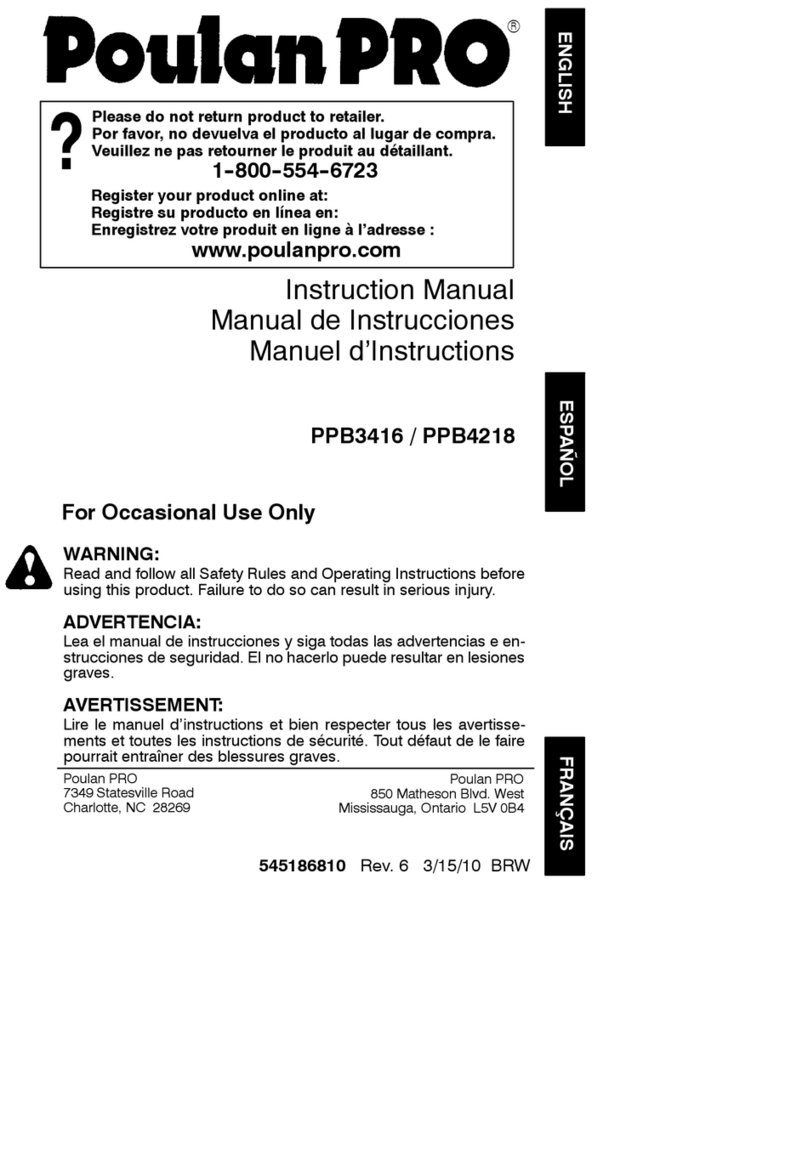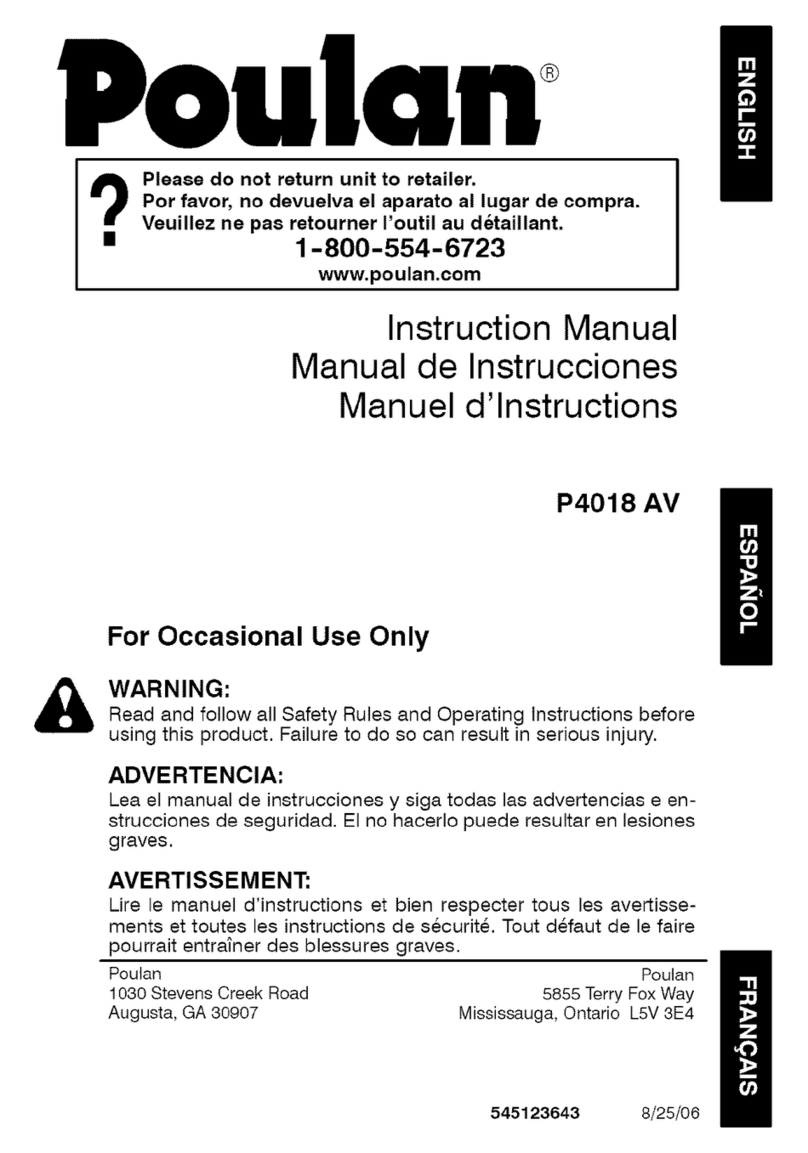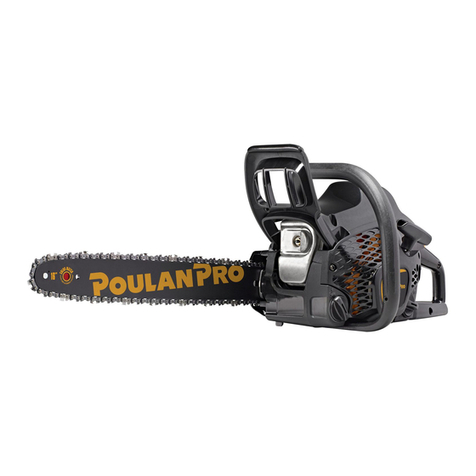3
duty, non-slip gloves; eye protection such
as non-fogging, vented goggles or face
screen; an approved safety hard hat; and
sound barriers (ear plugs or mufflers) to
protect your hearing. Regular users
should have hearing checked regularly as
chain saw noise can damage hearing. Se-
cure hair above shoulder length.
Snug
Fitting
Clothing
Safety
Shoes Safety Chaps
Heavy Duty
Gloves
Eye
Protection
Hearing
Protection
Safety Hat
SKeep all parts of your body away from the
chain when the engine is running.
SKeep children, bystanders, and animals a
minimum of 30 feet (10 meters) away from
the work area. Do not allow other people
or animals to be near the chain saw when
starting or operating the chain saw.
SDo not handle or operate a chain saw when
you are fatigued, ill, or upset, or if you have
taken alcohol, drugs, or medication. You
must be in good physical condition and men-
tally alert. Chain saw work is strenuous. If
you have any condition that might be aggra-
vated by strenuous work, check with your
doctor before operating a chain saw.
SCarefully plan your sawing operation in ad-
vance. Do not start cutting until you have a
clear work area, secure footing, and, if you
are felling trees, a planned retreat path.
OPERATE YOUR SAW SAFELY
SDo not operate a chain saw with one hand.
Serious injury to the operator, helpers, by-
standers or any combination of these per-
sons may result from one-handed opera-
tion. A chain saw is intended for
two-handed use.
SOperate the chain saw only in a well-venti-
lated outdoor area.
SDo not operate saw from a ladder or in a
tree.
SMake sure the chain will not make contact
with any object while starting the engine.
Never try to start the saw when the guide
bar is in a cut.
SDo not put pressure on the saw at the end of
the cut. Applying pressure can cause you to
lose control when the cut is completed.
SStop the engine before setting the saw
down.
SDo not operate a chain saw that is dam-
aged, improperly adjusted, or not com-
pletely and securely assembled. Always
replace bar, chain, hand guard, or chain
brake immediately if it becomes damaged,
broken or is otherwise removed.
SWith the engine stopped, hand carry the
chain saw with the muffler away from your
body, and the guide bar and chain to the
rear, preferably covered with a scabbard.
MAINTAIN YOUR SAW IN GOOD
WORKING ORDER
SHave all chain saw service performed by a
qualified service dealer with the exception
of the items listed in the maintenance sec-
tion of this manual. For example, if improp-
er tools are used to remove or hold the fly-
wheel when servicing the clutch, structural
damage to the flywheel can occur and
cause the flywheel to burst.
SMake certain the saw chain stops moving
when the throttle trigger is released. For
correction, refer to CARBURETOR AD-
JUSTMENT.
SNever modify your saw in any way.
SKeep the handles dry, clean, and free of oil
or fuel mixture.
SKeep fuel and oil caps, screws, and fas-
teners securely tightened.
SUse only Poulan accessories and replace-
ment parts as recommended.
HANDLE FUEL WITH CAUTION
SDo not smoke while handling fuel or while
operating the saw.
SEliminate all sources of sparks or flame in
the areas where fuel is mixed or poured.
There should be no smoking, open flames,
or work that could cause sparks. Allow en-
gine to cool before refueling.
SAlways have fire extinguishing tools avail-
able if you should need them.
SMix and pour fuel in an outdoor area on
bare ground; store fuel in a cool, dry, well
ventilated place; and use an approved,
marked container for all fuel purposes.
Wipe up all fuel spills before starting saw.
SMove at least 10 feet (3 meters) from fuel-
ing site before starting engine.
STurn the engine off and let saw cool in a
non-combustible area, not on dry leaves,
straw, paper, etc. Slowly remove fuel cap
and refuel unit.
SStore the unit and fuel in an area where fuel
vapors cannot reach sparks or open
flames from water heaters, electric motors
or switches, furnaces, etc.
KICKBACK
WARNING: Avoid kickback which
can result in serious injury. Kickback is the
backward, upward or sudden forward motion
of the guide bar occurring when the saw chain
near the upper tip of the guide bar contacts any
object such as a log or branch, or when the
wood closes in and pinches the saw chain in
the cut. Contacting a foreign object in the wood
can also result in loss of chain saw control.
SRotational Kickback can occur when the
moving chain contacts an object at the up-
per tip of the guide bar. This contact can
cause the chain to dig into the object,
which stops the chain for an instant. The
result is a lightning fast, reverse reaction
which kicks the guide bar up and back to-
ward the operator.


